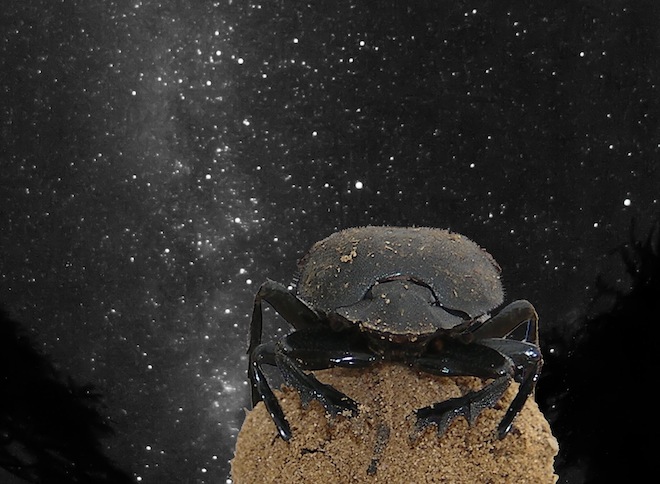We're open daily! View holiday hours
Science News
Dung Beetle Nightly Navigators
January 28, 2013

You write one silly script about dung beetles, and next thing you know, everyone thinks of you when they see dung beetles in a headline. Colleagues have been forwarding me the latest research in dung beetles and I can’t complain—it’s pretty darn exciting! The latest news? Dung beetles find their way by looking at the Milky Way.
Hard to believe—they’re insects, not astronomers, for goodness sakes! As Discover mentions, the dung-dining coleopteran are in good company, navigation-wise:
Christopher Columbus traveled by following the stars, as did Harriet Tubman.
Some of the same Swedish researchers who tested dung beetles’ sense of direction and published last year, have now found that these brilliant beetles dabble in celestial navigation of a sort.
Publishing last week in Current Biology, the researchers tested one species of dung beetle, Scarabaeus satyrus, in a planetarium in Johannesberg. They found that the beetles used the entire Milky Way to guide their dung in a straight line to their destination. As Ed Yong notes in National Geographic:
If they left out this galactic stripe, or only added the 18 brightest stars, the beetles took much longer to find their way out.
The researchers were thorough, too. In their experiments, they gave the beetles caps to block the light from reaching their eyes. Once again, the beetles wandered from the most direct route.
The scientists believe that although the beetles’ eyes are too weak to distinguish individual constellations, they use the gradient of light to dark provided by the Milky Way to ensure they keep rolling their balls in a straight line and don’t circle back to competitors at the dung pile. The New Yorker offers a particularly charming description of the experiment.
Not sure, even with a ball of poop, I could navigate as well as dung beetles—day or night!
Image: Maria Dacke